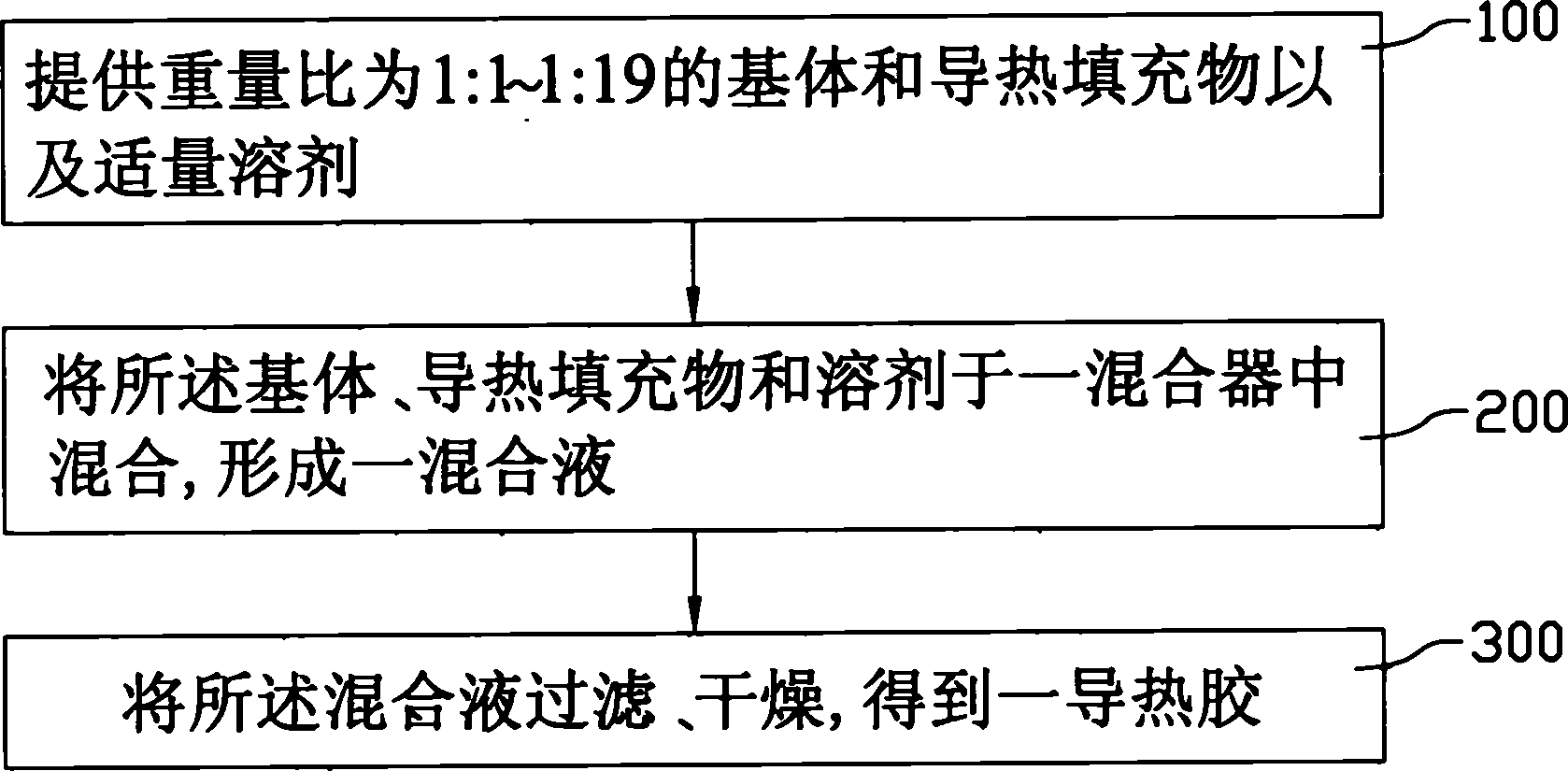Thermally conductive glue and method of manufacturing same
A technology of thermally conductive adhesives and thermally conductive fillers, applied in the direction of adhesives, epoxy resin glue, adhesive types, etc., can solve the problems of reducing interface impedance, reducing the proportion of thermally conductive fillers, increasing interface thermal resistance, etc., to achieve reduction Small thermal resistance, avoiding excessive thermal resistance, and improving thermal conductivity
- Summary
- Abstract
- Description
- Claims
- Application Information
AI Technical Summary
Problems solved by technology
Method used
Image
Examples
Embodiment Construction
[0033] The technical solution will be described in further detail below in conjunction with the accompanying drawings.
[0034] see figure 1 , the preparation method of the thermally conductive adhesive provided by the technical solution, which includes the following steps: providing a predetermined ratio of a matrix, a thermally conductive filler, and an appropriate amount of solvent, so that the ratio of the matrix to the thermally conductive filler reaches 1:1 to 1:19; The matrix, the heat conduction filler and the solvent are mixed in a mixer to form a mixed liquid; the mixed liquid is filtered and dried to obtain a heat conduction adhesive. The method for preparing the thermally conductive adhesive provided by the technical solution will be described in detail below in conjunction with the examples.
[0035] Step 100: providing a matrix, a thermally conductive filler, and an appropriate amount of solvent in a weight ratio of 1:1˜1:19. The matrix can be selected from a p...
PUM
 Login to View More
Login to View More Abstract
Description
Claims
Application Information
 Login to View More
Login to View More - Generate Ideas
- Intellectual Property
- Life Sciences
- Materials
- Tech Scout
- Unparalleled Data Quality
- Higher Quality Content
- 60% Fewer Hallucinations
Browse by: Latest US Patents, China's latest patents, Technical Efficacy Thesaurus, Application Domain, Technology Topic, Popular Technical Reports.
© 2025 PatSnap. All rights reserved.Legal|Privacy policy|Modern Slavery Act Transparency Statement|Sitemap|About US| Contact US: help@patsnap.com


